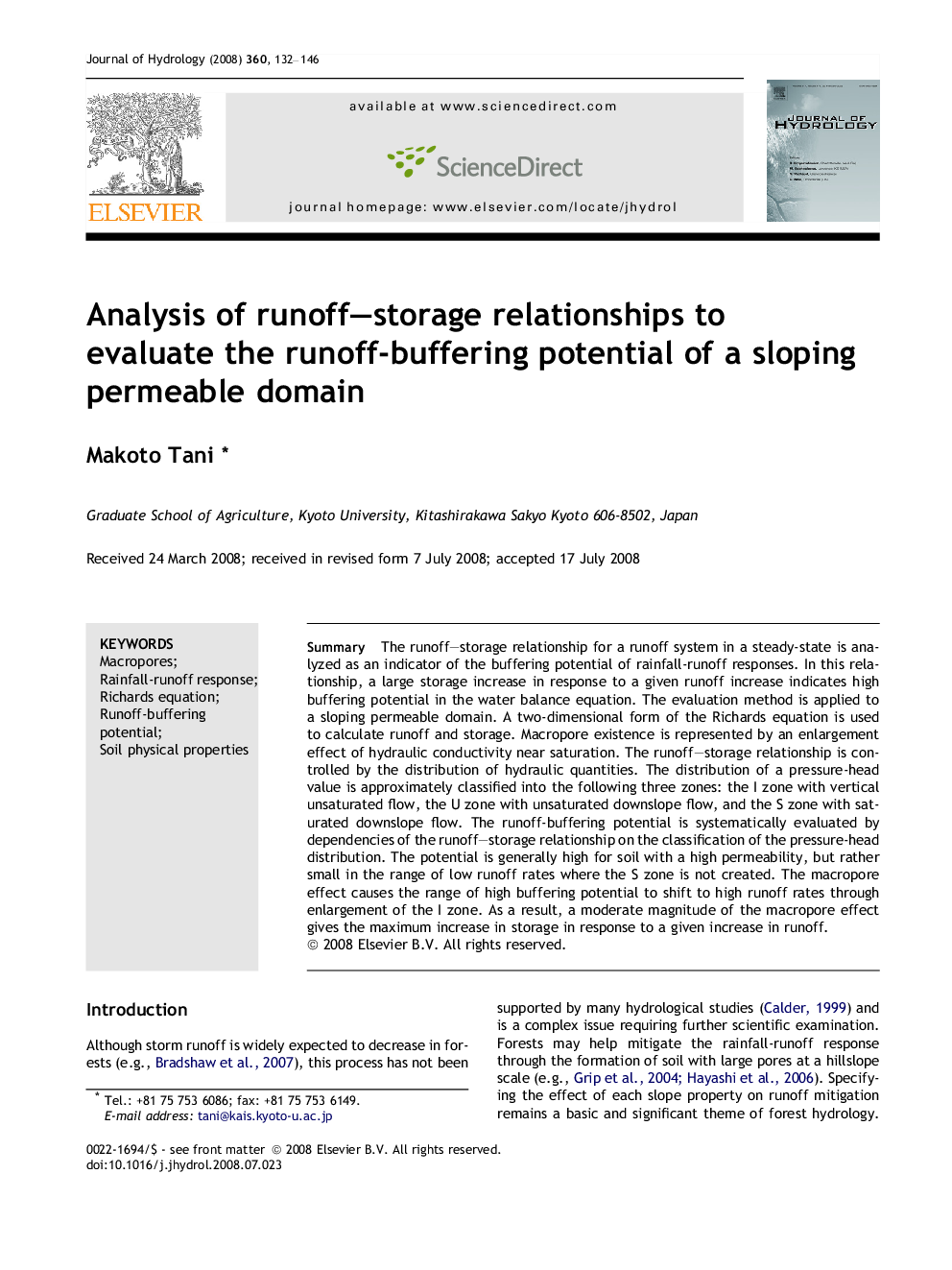| Article ID | Journal | Published Year | Pages | File Type |
|---|---|---|---|---|
| 4579057 | Journal of Hydrology | 2008 | 15 Pages |
SummaryThe runoff–storage relationship for a runoff system in a steady-state is analyzed as an indicator of the buffering potential of rainfall-runoff responses. In this relationship, a large storage increase in response to a given runoff increase indicates high buffering potential in the water balance equation. The evaluation method is applied to a sloping permeable domain. A two-dimensional form of the Richards equation is used to calculate runoff and storage. Macropore existence is represented by an enlargement effect of hydraulic conductivity near saturation. The runoff–storage relationship is controlled by the distribution of hydraulic quantities. The distribution of a pressure-head value is approximately classified into the following three zones: the I zone with vertical unsaturated flow, the U zone with unsaturated downslope flow, and the S zone with saturated downslope flow. The runoff-buffering potential is systematically evaluated by dependencies of the runoff–storage relationship on the classification of the pressure-head distribution. The potential is generally high for soil with a high permeability, but rather small in the range of low runoff rates where the S zone is not created. The macropore effect causes the range of high buffering potential to shift to high runoff rates through enlargement of the I zone. As a result, a moderate magnitude of the macropore effect gives the maximum increase in storage in response to a given increase in runoff.
